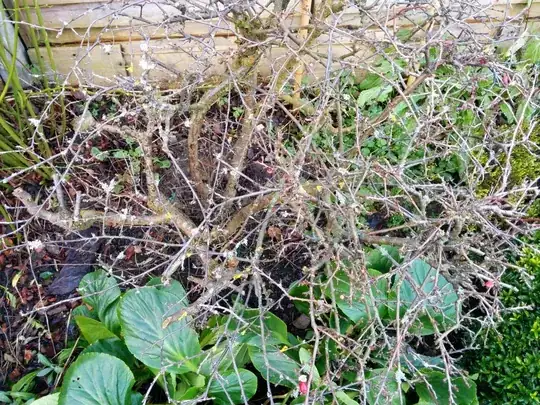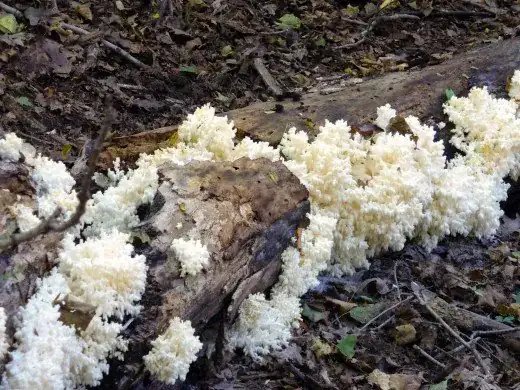So, recently we have been conducting an experiment in which we have had to try and grow bean plants while using fertiliser to compare which fertiliser is the best in terms of growth. Over three weeks we have discovered some sort of white mold on the outside of the pot plant therefore making it not grow. We are despearate for answers as we have to talk about what went wrong with it. The fertiliser we used was Hortico all purpose compound fertiliser. Thank you ]1
]1
- 21
- 1
- 2
-
1Well I'm very puzzled by this experiment - it is absolutely not usual practice to use fertilizers of any sort until a seed has germinated and become a small plant. The beans seeds should have been sown into starter (seed and cutting) soil and allowed to grow on a bit (maybe 6 pairs of leaves) then potted up and then a little fertilization started. You've got fungus because the soil's been kept too wet... and what soil you used (as in where it came from, like out of a sterilized bag, or the garden) is a major factor. Were you told to use fertilizer immediately on sowing the seeds? – Bamboo Aug 09 '18 at 10:45
-
Yeah you got some mold; not necessarily the reason your plants didn't grow but not typical of a healthy environment for them. I would chock it up to bad luck. I am assuming every plant got watered the same amount at the same time? If that's the case then yeah, like I said: chock it up to bad luck. The soil you used for these two had some fungal spores in it. – Rob Aug 09 '18 at 15:42
-
Looks like a slime mold. Does it move? http://hyland255.blogspot.com/2010/04/dictyostelium-discoideum-for-this-final.html – Wayfaring Stranger Aug 09 '18 at 15:53
2 Answers
Another suggestion is that this is merely a crystalline deposit from the fertilizer in solution. Note that the deposits are not only on the soil and the pots but also on the plastic lids used as trays. Look carefully and you will see the very bottom of the pot is clear of deposit for about 0.5 cm. and then it starts. That's about the depth of the lid. As the water evaporated from the lid surface it left behind the solids in solution which grew crystals.
(Edit: A scientist of course would examine the growths under a microscope to see if these are crystals or fungus. A quick and easy test is whether they feel hard or soft. If soft they will be fungus, if hard sharp and scratchy then they are crystals.)
When the fertilizer is supplied to you it is in a mix; when it is wetted it breaks up into component parts, some of which may individually reform as crystals when evaporated. It used to happen on clay pots when these were commonly used - the water would evaporate from the pot sides leaving a deposit behind that was hard to wash off.
The deposits on the inside of the pots above soil surface are evidently profiting from capillary action on pre-existing dirt, possibly from pots not washed and thoroughly cleaned beforehand.
It's a good experiment. Just change the goal from how plants respond to fertilizer to how to grow crystals using the capillary effect and evaporation. It's a learning moment.
- 19,612
- 1
- 12
- 43
-
Possible but fungi is an exo-digester; it can't make its own food. One of the ways it gets food is to grow. It can reproduce in order to grow but virtually all growth occurs by elongation of hyphal tips; it grows like frost on a window. In other words it is kind of dumb XD it doesn't know if there will be food out there on the outer edges of the petri dish but it looks for it anyway. – Rob Aug 09 '18 at 15:50
-
-
@Colin I do not think these are salt crystals. Fairly positive this is a fungus, there are a few that look just like this. Also, using water from the city municipal water treatment will cause salt deposits. That is usually just a white powdery coating on top of the soil and the rims and sides of clay pots. These are plastic pots, this stuff is just a very happy fungus. Not a bean in sight. – stormy Aug 09 '18 at 22:20
-
I have put forward another possibility, that's all. Crystals can form when the concentration of the irrigation solution is right. There's an easy test, which could resolve this issue. There are some observed details not easily explained by the fungus proposal. – Colin Beckingham Aug 09 '18 at 23:00
This is just regular fungus among us. You've been watering too often and too much. This has absolutely nothing to do with fertilizer. I have to ask, what kind of soil are in these pots? Sterilized potting soil? No? If you got soil from your garden this is where the fungus spores originated.
This 'test' is interesting to be sure. NPK are the three major chemicals critical for photosynthesis. Soils do not come with these chemicals unless we add them. Compost is not fertilizer. Compost is not soil. All plants in pots have to have sterilized potting 'medium'...very little soil if at all included in potting 'soil'. Whether planting in sterilized potting soil or planting in the larger body of the out of doors garden, we are responsible for adding just the right amount of chemistry from production by the plant on our time scale to fill our needs
You might have gotten a shovel full of fungal spores, clay soil that holds onto moisture way too long. Doesn't really matter how the Nitrogen or the Phosphorous or the Potassium was 'manufactured'...these are elements that are what they are where ever you find them. We humans can do a lot of things but remaking elements and compounds is not one of them.
Nitrogen is Nitrogen. Phosphorous is phosphorous and Potassium is potassium. I'd like to see what you would come up with when you research the ingredients in your 'fertilizers' first and explain why one would be different than a comparable yet different brand. There is no Magic in fertilizers.
For you to be able to do a bonafide experiment, you need to be able to control all variables. Soil. Water. Light. Temperature. Chemistry. Drainage. One should know how to grow plants first before trying to do experiments with plants, grins. Any experiment should have sterilized environment, mediums/soils. I'd like to have a discussion with your professors. It seems almost that you were set up to fail, plain and simple. There seems to be an amazing amount of water accessible to these plants.
Growing seeds, trust me, should be done in tiny pots with sterilized potting soil. I use a spray bottle to keep just the soil around the seed moist, not soggy. When the plant gets larger the roots start to fill the soil and help suck water out of it. Never plant seeds in big pots of soil. Pots of soil are nothing like the large body of an outdoor garden. Tiny plants in a large body of soil medium confined in pots will usually get root rot or damp off. Seeds should be started in tiny pots, when roots show through the drain holes, transplant them into less tiny pots, add a bit of fertilizer at this point, not before, then in a week or two transplant into larger pots with sterilized potting soil of course or take a few weeks to acclimate your 'starts' to the real sunlight and plant them in the main body of your garden. That acclimation is critical. At this point I would be looking at the plant's coloring, growth habits for indications of excessive or too little chemistry available to your plant. Then devising a prescription of fertilizer made just for that plant. Summer and late season I like 2-5-4 Growilla. Just enough for most plants needing more photosynthesizing prowess during the second half of the 'normal season'. Hortico seems fine for a basic fertilizer formulation. What was the other 'brand' involved in your experiment?
Sorry, (looking down in shame) but this little ditty of mine concerning fertilizer works, ugh! Less is Best, More is Death and None is Dumb. Might not be very clever but the point should be clear I hope?
Where are the bean plants? Too wet, too little sun, very favorable for fungus. Not so much for plants. Sorry!
No one 'fertilizer' will have magical properties over another brand. Nitrogen is Nitrogen?
- 40,098
- 3
- 31
- 75

